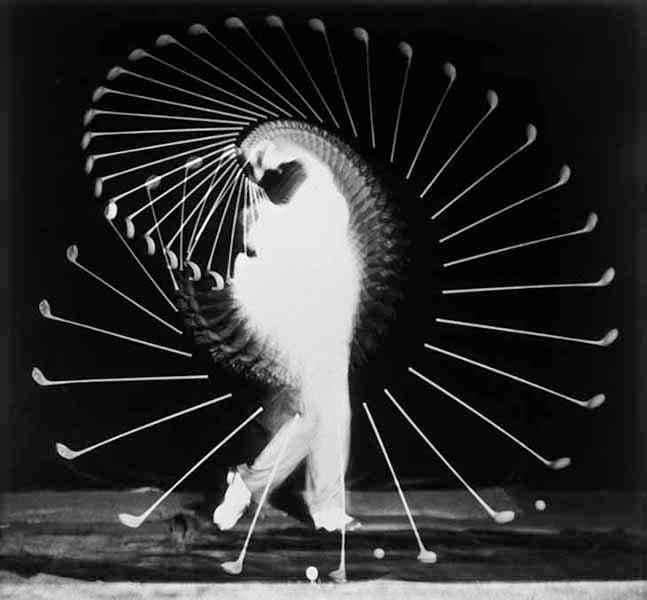Scientist of the Day - Harold Edgerton
Harold Edgerton, an American engineer, inventor, and photographer, was born Apr. 6, 1903. Edgerton grew up in Nebraska and was a tinkerer from an early age. After graduating from the University of Nebraska at Lincoln, he spent a year working for General Electric, developing a way to inspect rotating machines while they were running, using stroboscopic lighting to freeze the machines in motion. This established an interest in high-speed photography that would continue throughout his life.
Edgerton headed off to MIT in 1926, an institution that not only granted him his advanced degrees, but provided an academic home for his entire career. It was in the 1930s that Edgerton became seriously interested in stroboscopic photography. He invented equipment that could generate intense flashes of light that lasted only one-hundred-thousandth of a second, and he also got interested in more mundane events than rotating motors, such as dripping faucets, levitating hummingbirds, and cats lapping up milk. Soon he had lowered the flash interval to one-millionth of a second, and he was recording photographs that were breathtaking in their beauty as well as eye-opening in what they told us about short-lived events.
One of Edgerton’s most famous photographs was taken in 1935 and shows a drop of milk splashing onto a plate (first image). It is often called “The Coronet,” for obvious reasons. A later color version was taken in the 1950s, but I have always liked this one better. Edgerton also recorded images of a seriously deformed baseball at the instant of impact with a bat, and the stroboscopically-interrupted swing of a golfer (third image, above). These and many other memorable photographs were published in a large-format, coffee-table-style book called Flash! in 1939. The book prompted a short (9-minute) documentary film, Quicker'n a Wink (1940) which won an Oscar award for short-subject films. It is available on YouTube and is quite entertaining, provided that you can put up with the attempt at running humor, which falls quite a bit short of Victor Borge. The Oscar was not for narration.
During the War, Edgerton helped develop better techniques for aerial photography, inventing an incredibly powerful strobe that could illuminate an entire battlefield from high altitude; it was used the night before D-Day to be sure the Germans were still unaware of the impending invasion. After the War, Edgerton helped atomic scientists record the immediate aftermath of a nuclear detonation (fourth image, above). This required a magnetic shutter that could take an exposure in one millionth of a second, a feat impossible for a mechanical shutter. He also worked with Jacques Cousteau to develop better methods for underwater photography, and even ventured into sonar, providing equipment that was used to discover the undersea remains of the USS Monitor, lost since the Civil War.
Several other of Edgerton’s most iconic photos were taken in the 1960s, including one capturing a bullet that had just passed through an apple (fifth image, above). These also required exposures of a millionth of a second. The flash was triggered by the impact of the projectile.
MIT has established the Edgerton Digital Collections (EDC) project, which makes available online thousands of Edgerton photographs, as well as research notebooks and other archival material. You can find thumbnails of many of his most iconic photographs at the webpages that start here. And you will find others less iconic. I like the one of a circus acrobat newly shot from a cannon and headed for a net that I hope was in place (sixth image, above).
Edgerton was an exceptionally popular teacher at MIT and his classes were always filled, as were his famous labs. We like this last photo, showing a man seemingly happy with what he has given the world, and the world has given him.
Dr. William B. Ashworth, Jr., Consultant for the History of Science, Linda Hall Library and Associate Professor emeritus, Department of History, University of Missouri-Kansas City. Comments or corrections are welcome; please direct to ashworthw@umkc.edu.












